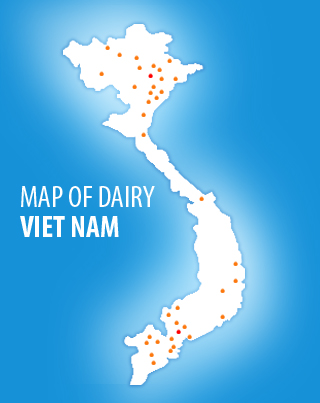News
Feed strategies key to nitrogen-efficient dairy farming - study

According to her study, reducing protein content in the ration without impacting milk production by adding supplements or additives also has potential, but is more difficult. Adding essential oils to the feed to influence the rumen microbiome seems promising, but whether the effect lasts for a long time needs further investigation.
In her PhD, Tine Van den Bossche investigated whether and how dairy farmers can reduce their nitrogen emissions through nutritional strategies. Nitrogen is essential for all living organisms, but emissions from overuse are harmful to the environment and human health. In agriculture, these problems specifically involve ammonia, nitrous oxide emissions and nitrate losses, the main sources being livestock production and the use of slurry and fertilisers.
Grassland management
Grassland is a primary protein source for dairy cattle and plays an important role in the feeding strategy of dairy farmers. Different grassland management strategies can improve grassland nitrogen utilization and protein quality of grass silage on commercial dairy farms.
Grass-clover with reduced fertilization: Switching from grass to grass-clover is an effective strategy to reduce fertilizer use and improve nitrogen utilization of grassland, resulting in fewer nitrogen losses. A field trial showed that grass clover could deliver 11 tons of dry matter per hectare with 71% less fertiliser compared to grass.
Good mowing practices: Mowing frequency and timing, pre-drying and fermentation conditions impact the protein quality of grass silage. First, mowing grass at an early growth stage increases organic matter digestibility. Mowing during sunny afternoons leads to higher sugar content, and adequate pre-drying is also very important. Avoiding soil contamination is also essential for a low crude ash content.
"With these strategies, high-yielding dairy farms can grow high-protein-quality forage in a nitrogen-efficient manner, thus reducing their need for fertiliser and concentrates," Van den Bossche said.
Silage additives
To reduce protein breakdown in grass silage and thus further improve silage quality (especially for protein-rich autumn grass), Van den Bossche also investigated the potential of a hydrolyzable tannin extract as a silage additive. Tannin can bind proteins, preventing them from breaking down in the silage and in the rumen and improving nitrogen utilization of the feed by the cow. However, the dose of tannin studied (7.2 g/kg DS) was found to be insufficient to improve silage or protein quality. Increasing the dose could lead to more pronounced effects but does not make economic sense, according to Van den Bossche. Feeding the tannin grass silage did appear to shift nitrogen losses from urine to manure, a positive effect because nitrogen in urine leads to faster losses.
Feed Management
Lowering protein in the ration effectively reduces nitrogen excretion and emissions. One gram less protein per kilogram of dry matter leads to 1% less ammonia emission. Thus, reducing the protein content per kilogram of dry matter from 16.5% to 14.5% would lead to a 20% ammonia reduction. However, if this causes amino acid deficiencies, it also lowers milk production. Tine Van den Bossche investigated whether administering resistant amino acids or additives that influence the microbiome could solve this challenge.
Rumen-resistant amino acids: Little is still known about the availability of amino acids in feedstuffs and it is difficult to accurately determine the needs of dairy cows. The entire spectrum of amino acids must be considered. This makes administering rumen-resistant amino acids via supplements challenging.
Enzymes: An amylase additive can stimulate starch digestion in the rumen, which was confirmed in this study. It is mainly of interest in rations with a high proportion of rumen resistant starch and a high unresistant protein balance (OEB). However, it is difficult to make rations with low protein content, still apply sufficient OEB. Therefore, in trial, this additive had less potential in combination with low protein.
Essential oils: Adding essential oils to the feed had the best effect in the study. It offers potential for optimising nitrogen utilisation in cows and increases milk (protein) production.
"However, additional research is needed because the microbiome in the rumen can adapt, making long-term effects difficult to predict," Van den Bossche said.





















